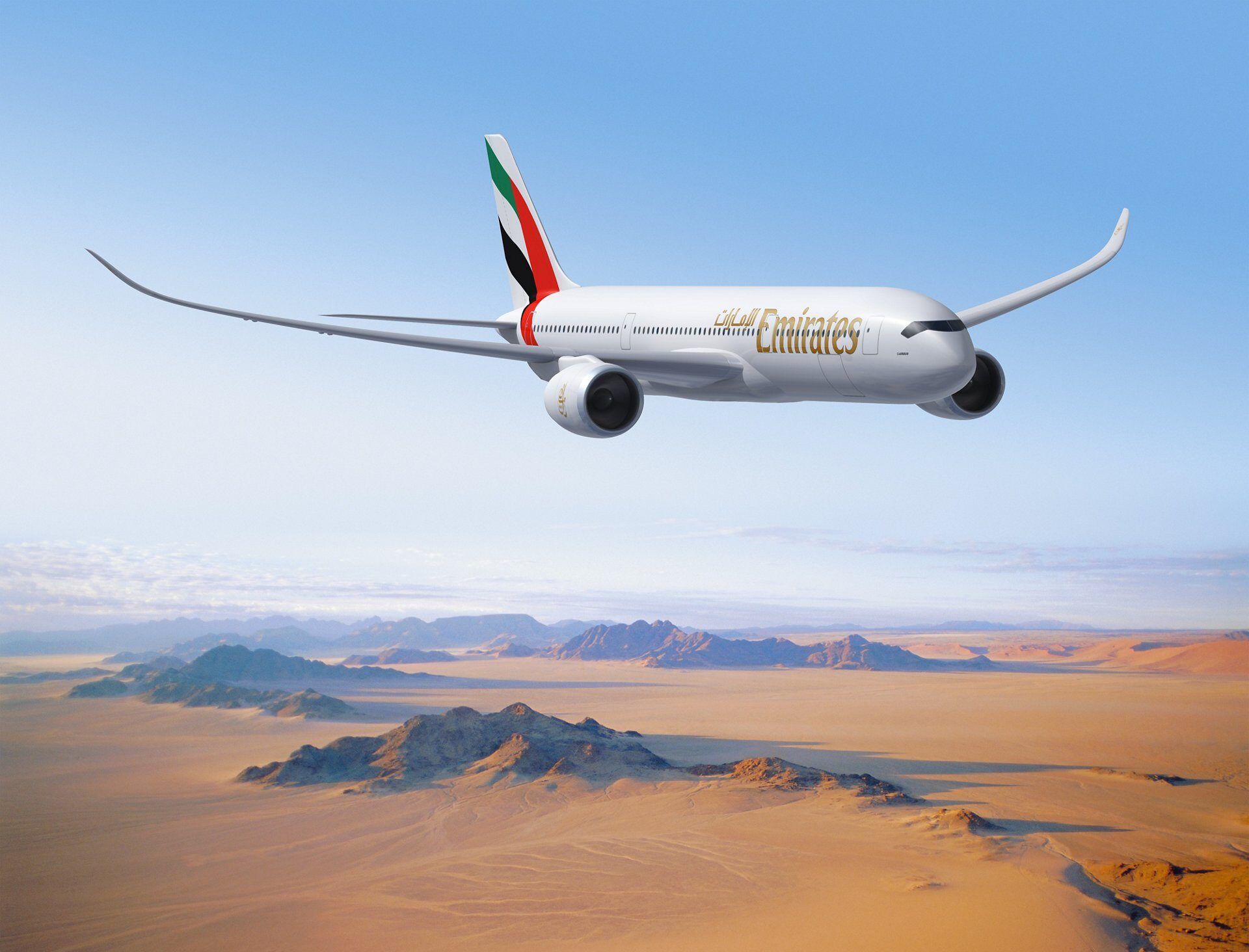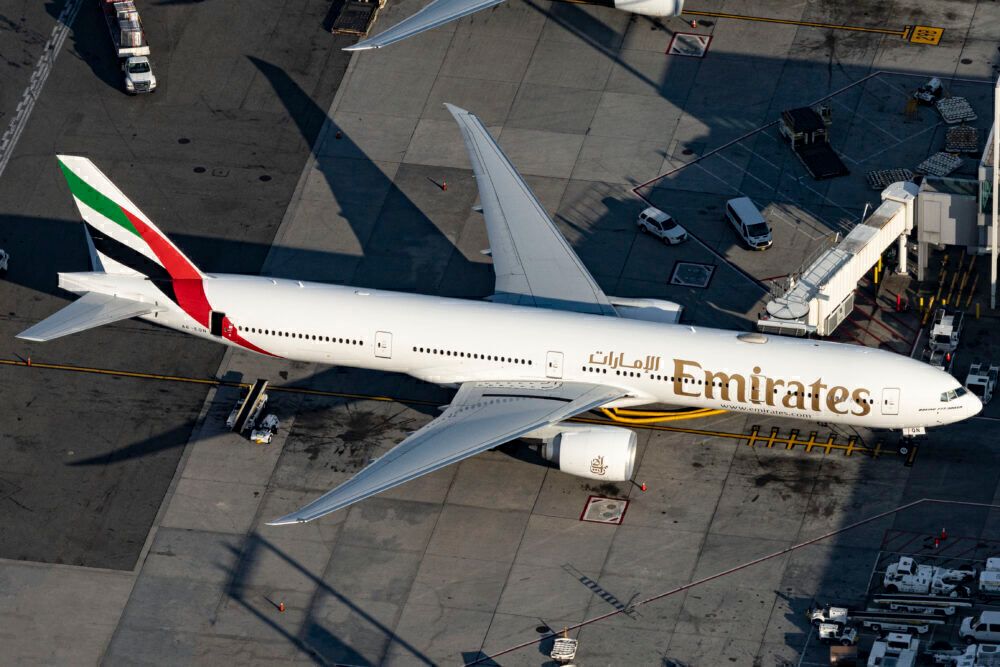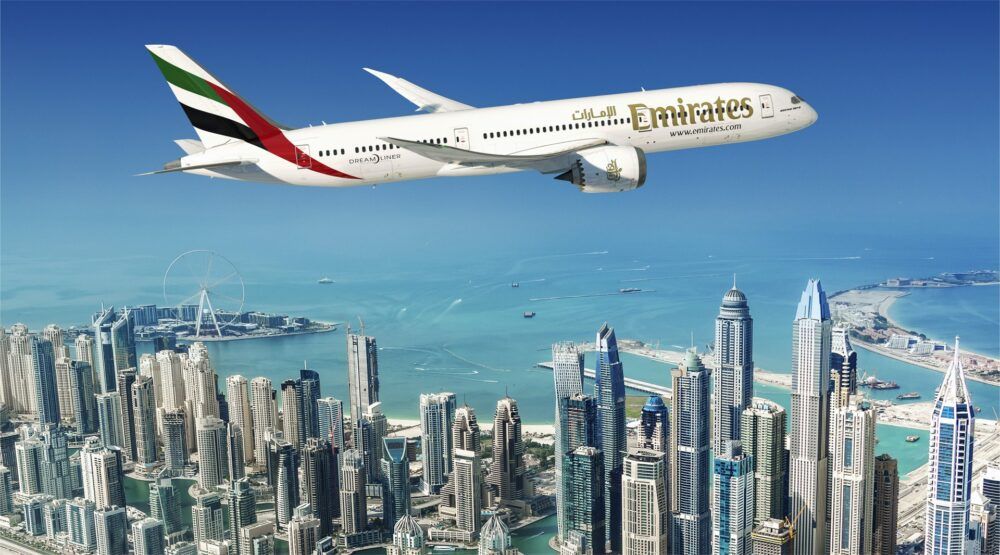Emirates is gearing up to receive the first of two brand new plane types. The Boeing 787 and the Airbus A350 will both begin arriving in 2023, but what’s the plan with these smaller aircraft? Speaking exclusively to Simple Flying in an interview, Emirates president Sir Tim Clark explained that it’s not about replacing the big jets with small, but more about opening new opportunities to the carrier.
Emirates’ fleet shakeup is coming
In terms of its passenger fleet, Emirates has always had a very clear strategy. Although it has, in the past, operated aircraft as diverse as the A300, A340 and even a 737, for the past few years, the only aircraft in the fleet have been the biggest of them all – the 777 and the A380.
However, Emirates’ fleet is set for a shakeup with the arrival of two brand new types. Starting in 2023, Emirates will begin flying the A350 and the 787, both new technology aircraft and both new types to the fleet.
Emirates’ order for A350s came at the tail end of 2019, at the Dubai Air Show that year. Initially placed in tandem with an order for A330s, the number ordered started with 39 and then ballooned to 50 as the airline firmed up its plans. Emirates will fly the A350s from 2023.
Along with the incoming A350s, Emirates fleet diversity is set to further see an enhancement with the addition of the 787 Dreamliner. The airline has shown interest in the 787 for some years, having ordered up 40 787-10s in 2017. This was later downsized to the popular 787-9, firming up an order of 30 of the type with Boeing.
There are talks that the order for the 787 could further be inflated as the airline looks to reduce its 777X commitment. What’s more interesting, however, is the reason for this shift to small. Speaking exclusively to Simple Flying in an interview, Emirates president Sir Tim Clark noted that it’s not all about replacing the large aircraft. He said,
“The widebody twins figure very much in our plans, not so much for replacement - unfortunately the A380s will eventually have to be replaced - but for our ability to increase frequency of already profitable city pairs and introduce new routes, which would be too big for a 777 or an A380.”
Stay informed: Sign up for our daily and weekly aviation news digests.
Where will Emirates fly its smaller twinjets?
As of March 2021, Emirates is flying to 161 destinations across 85 different countries. While that’s a large coverage by any estimation, Clark believes there are still plenty more destinations to be added to the Emirates network. He said,
“[The smaller twinjets] allow us to open a lot more countries, or cities within those countries, alongside FlyDubai. So we would manage the capacity relationship between the two carriers into countries where we see real opportunity. Africa, South America, Asia, and believe it or not Europe, which, with a combination of all these aeroplanes gives us an enormous potential. That's where we're looking at it.”
There are dozens of destinations ripe for Emirates’ service in all the continents Clark mentioned. While the airline covers all the main destinations, and delivers onward connections via its extensive codeshare partners, there is still expansion left to do before the airline has even begun to exhaust its opportunities.
In Africa, for example, great swathes of central Africa are unserved by the carrier. We could see a 787 hopping down to Kinshasa in the DRC, or to Kigali in Rwanda to compete with rival Qatar’s interests there. South America, too, is largely abandoned by the airline, with only major destinations of Sao Paulo, Rio, Buenos Aries and Santiago seeing the arrival of Emirates’ planes.
Emirates will not deviate from its hub and spoke strategy, but with the smaller, more nimble twins in its fleet, more locations will become economical to add to the network. As such, we can expect to see new routes being added in spades as the smaller aircraft arrive, expanding the reach of this global giant from its hub in Dubai.




